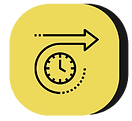Designer
A playful solution to improve social and emotional wellbeing of aboriginal australian kids.
Dreamtime Adventure

Project Type
Social Innovation
Role
Strategic Designer / Co-Leader
Team
Yuri Centauri
Yahui Fang
Hengyu Chen
Liuxue Jiang
Tools
Adobe Aero (Augmented Reality)
Miro (Team working)
Monday (Team Management)
Premier Pro (Holographic Video)
Client
Jasper Garay
University of Sydney
May 2024
As a design team, we listened to the client, examined the problem space, researched it, and reframed the problem to find the opportunity to provide a solution.
Initial Brief
The opportunity to explore how Digital Health applications and
experiences can be designed and implemented to enhance SEWB outcomes of Aboriginal
and Torres Strait Islander people. There is specific interest in the potential of Virtual and
Augmented reality.
Problem Space
Social Emotional Wellbeing for Aboriginal People is beyond physical and mental health. This encompasses more holistic understanding including physical, emotional, social and spiritual aspects. The figures below shows these aspects of SEWB that are important to Aboriginal communities.
Reframed Brief
“How might we incorporate emerging technology with Social and Emotional Learning to improve Aboriginal Elementary School Student SEWB?”

Design Method
-
Opportunity Mapping
-
HMW Statement
DEVELOP
DEFINE
DELIVER
-
Filed StudiedOnline
-
Ethnography
-
Mind Mapping
DISCOVER
-
Empathy Mapping
-
Stakeholder Mapping
-
Stakeholder Interview
-
Crazy 8s’ Ideation
-
Paper-Prototype Testing
-
Focus-Group Review
-
Tarot Cards of Technology
-
Stakeholders and Experts Consultations
-
Feedback Review
-
6 Design Principles (human-centered)
-
Personas and Storyboard
-
Design Review
-
Testing and Evaluations
-
Iterations
-
Journey Mapping
-
Chronological Visualization
Research insights
Through extensive research, including client and expert interviews and technological analysis, we identified the pain points of our users and focused on Aboriginal children aged 7-12, where we could have the most impact. Our findings show that social and emotional learning (SEL) significantly improves children's personalities and skills, helping to increase their social and emotional well-being (SEWB).

4-11 years
12-17 years
The diagram shows that Aboriginal children are more at risk of experiencing emotional and behavioral difficulties than non-Aboriginal children
Design Principles and Objectives

Inclusive

Feasible

Educational

Inclusive
Cultural Relevance


Engaging
Ideation and
Prototyping

After multiple iterations of ideation, we created several prototypes of the game. We conducted multiple rounds of Crazy 8s, mixed ideas, and tested our concepts with team and studio members. We developed low-fidelity prototypes of the game.







The Idea Exhibition
The main idea is a low-fidelity board game with high-fidelity features that incorporate social and emotional learning infused with Aboriginal cultural references. This game aims to help children develop personal and interpersonal skills, addressing and mitigating the emotional and behavioral difficulties faced by both Aboriginal and non-Aboriginal children.

01. Boardgame
The first part of the game is the board game. To ensure accessibility, all educational content is available through the board game, with cards and badges providing storytelling narratives for our five storylines.
02. App Flow
02. App Flow
02. App Flow
The first layer of additional features for the game is accessible through a mobile application. This video illustrates the process of one level of the game from beginning to end, demonstrating how players can interact with the game and enhance their learning experience through the app's interactive elements.
The first layer of additional features for the game is accessible through a mobile application. This video illustrates the process of one level of the game from beginning to end, demonstrating how players can interact with the game and enhance their learning experience through the app's interactive elements.




03. High Tech Features
To extend our reach into the future of digital literacy and remain relevant over the next decade, I designed new augmented reality (AR) and holographic visual elements for the game. Each NPC and introductory animation will be displayed on holographic displays, and each level's challenges will be presented as interactive AR elements. These features allow for multiplayer collaboration within the game structure, enhancing the development of interpersonal skills. After conducting a cost analysis, I found these features to be both feasible and viable.
By scanning these QR codes you can experience a presentation of the levels.



03. Challenges and Acknowledgement
We designed a play-based learning game with challenges to develop social and emotional skills. The game includes five storylines based on the five principles of social and emotional learning, with each storyline containing five levels that explore various personal and interpersonal aspects. We incorporated acknowledgments and rewards to ensure our learning outcomes have a long-lasting, even everlasting, impact on the children's development. Providing physical and digital badges to acknowledge the kids' efforts and label them with positive characteristics.


Reflection
This project was insightful for me, given our few clients, limited resources for primary research, and a sensitive target audience. However, working with an amazing team and co-leading the effort to provide an engaging and playful solution for real social change was both exciting and challenging. I contributed my technological expertise to build the hologram and AR presentations. Overall, this project not only helped us achieve our goals but also brought us together as a close-knit group of designer friends.